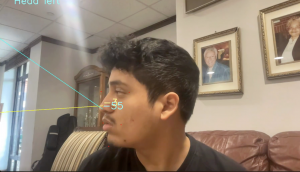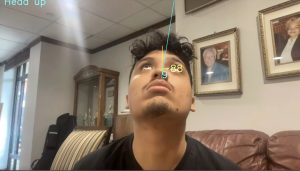This week, I continued to work with Sirisha on the accelerometer and it now prints the acceleration values and estimated y velocity values. Initially, while the command “12cdetect -r -y 1” showed that the accelerometer was connected at port 68, we were unable to read the actual data from the accelerometer. We ended up having to solder our wires into the holes of one of our spare accelerometers to make the connection more direct. This soldering process took surprisingly long, but we were able to get values printed to the terminal on the Nano. I also wrote some code to estimate the y velocity based on y acceleration values (standard integration). However, this procedure is not very accurate and estimating the velocity causes drifting errors over time, which could jeopardize the feature of our project in which feedback is given depending on the velocity of the car. We are considering purchasing a new sensor that measures velocity directly to address this issue, but may considering integrating it as a stretch goal because of how much time it took to debug using this accelerometer.
I also set up hosting of our web app using Firebase to https://drivewise-ef9a0.web.app/
Unfortunately, the WiFi dongle did not arrive until later in the week and I was unable to pick it up and start setting it up to work with the Nano. Otherwise, I am on track with the goals that I set for myself last week and our new Gantt chart.
Next week, I hope to set up the Wifi dongle to work with the Nano, assemble the entire device and test that it still works with the power cord that we have, and work with Sirisha to send data from the Nano to the web app and display it. We want to do this using storage on Firebase.
Here is a breakdown of the tests that I have run and are planning to run:
- Accelerometer
- Try subtracting the average of the first 10 y acceleration readings (per run) to calibrate the sensor before estimating velocity. Then test this in 5 runs when the device is running on a table in HH to determine that the
- In the car, drive at 4, 5, and 6 mph to test whether the feedback is only triggered at > 5mph. Also test while the car is stationary and on for 5 minutes (making sure that the estimated velocity does not just continue accumulating).
- Web App
- Test that the recorded data displays correctly on the web app
- Check that a user only views data from their device by doing 1 ride with a set device id of 0 and 1 test ride with a set device id of 1 and make different login accounts for each
- Test that multiple users can be logged into different accounts on the hosted web app at the same time
- Jetson Nano
- Test that the Nano is able to be powered by the car (with USB A to USB C cord plugged into USB A port on car)
- Overall System
- Test each of our distraction cases in ideal conditions in both a stationary and moving car in an empty parking lot
- Test each of our distraction cases (other than blinking) in nonideal conditions in both a stationary and moving (very slow) car in an empty parking lot



